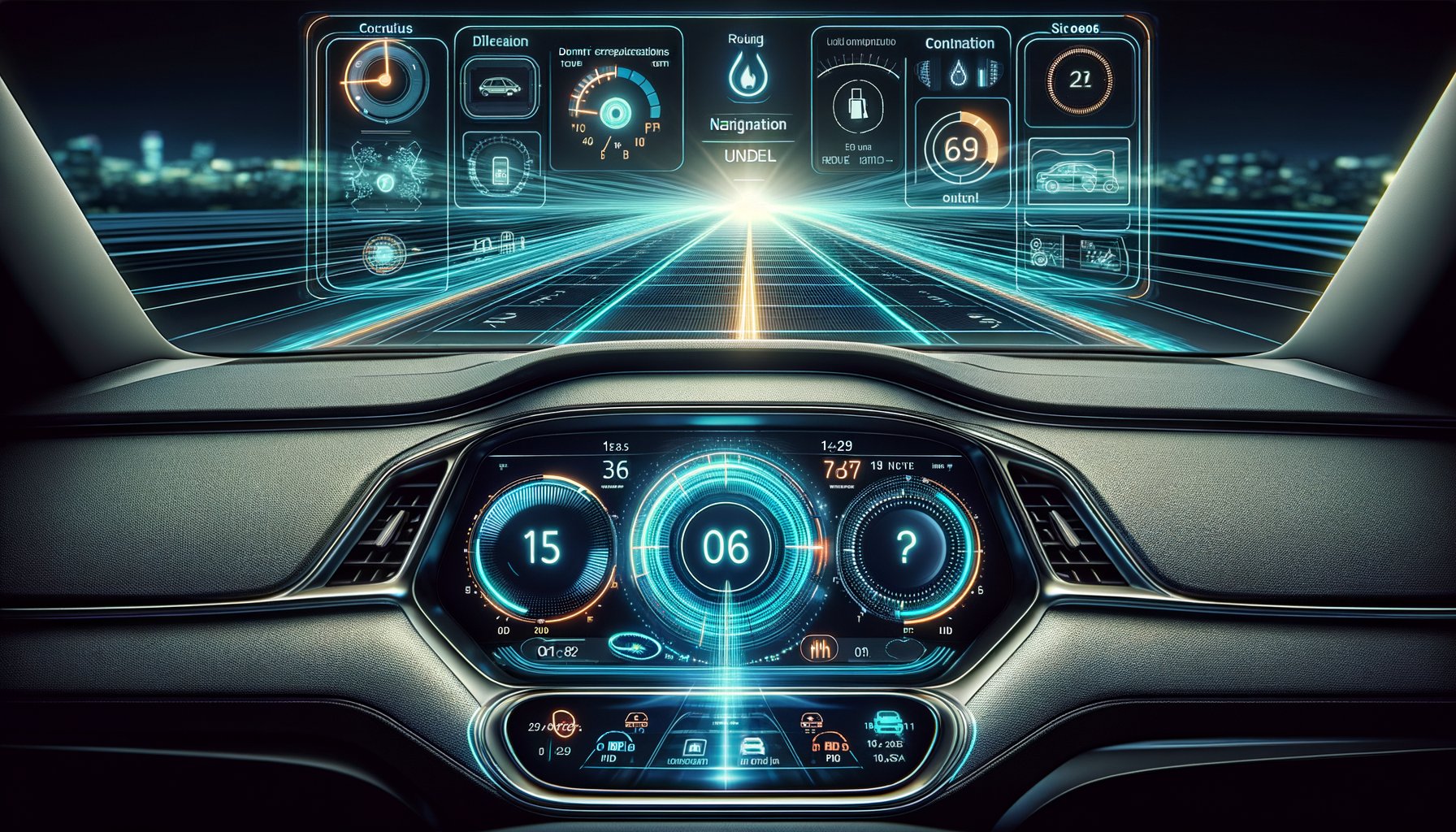Physical Address
304 North Cardinal St.
Dorchester Center, MA 02124
Physical Address
304 North Cardinal St.
Dorchester Center, MA 02124

Imagine you’re driving on a bustling city street, your eyes darting between the road and your GPS. Suddenly, an arrow appears on your windshield, pointing you to the correct turn. This is not a scene from a futuristic movie; it’s the promise of augmented reality (AR) dashboards – a technology that could revolutionise how we navigate our roads.
An augmented reality dashboard is an advanced navigation system that overlays digital information onto your car’s windscreen. This can include directions, speed limits, traffic updates and even points of interest like petrol stations or restaurants. Rather than glancing down at a traditional GPS device or smartphone, drivers can keep their eyes on the road while receiving real-time information directly in their field of vision.
The magic behind AR dashboards lies in complex computer algorithms and high-tech hardware. These systems use cameras and sensors mounted on the car to capture real-world data. This data is then processed by onboard computers which overlay relevant information onto the windscreen using a heads-up display (HUD).
AR dashboards also rely heavily on global positioning system (GPS) technology to provide accurate location-based information. Sophisticated mapping software translates this data into user-friendly visual cues that appear seamlessly integrated with the real world.
The primary benefit of AR dashboards is safety. By projecting information directly onto the windshield, drivers can keep their eyes focused on the road ahead, reducing distractions and potentially preventing accidents.
Another advantage is convenience. With AR dashboards, there’s no need to look down at a separate device or divide attention between multiple screens. All essential information is presented in one place, making it easier for drivers to digest and react.
Moreover, AR dashboards can enhance the overall driving experience. Whether it’s highlighting a hidden driveway or alerting drivers to nearby attractions, these systems offer a level of interaction and personalisation that traditional navigation tools simply can’t match.
Despite their potential, AR dashboards also face significant challenges. The technology is still relatively new and expensive, with only a handful of luxury car manufacturers currently offering this feature as standard. However, as with any new technology, prices are expected to drop as adoption increases and production costs decrease.
There are also regulatory hurdles to overcome. Different countries have different rules regarding what can be displayed on a car’s windscreen, and there’s ongoing debate about whether AR displays could distract drivers rather than assist them.
Finally, there’s the issue of technological reliability. GPS signals can be unreliable in certain areas, and sensor failures could result in incorrect or misleading information being displayed. Therefore, robust testing and backup systems will be crucial for ensuring the safety and effectiveness of AR dashboards.
Despite these challenges, many industry experts believe that AR dashboards represent the future of automotive navigation. As technology continues to evolve rapidly, we’re likely to see more sophisticated AR systems with advanced features such as voice recognition and gesture control.
In addition to improving safety and convenience for drivers today, AR dashboards may also play a key role in the transition towards autonomous vehicles. By providing real-time visual feedback about the vehicle’s surroundings and intended path, these systems could help passengers feel more comfortable with letting go of the wheel.
While we’re still a few years away from AR dashboards becoming commonplace, the wheels are already in motion. Companies like BMW, Mercedes-Benz and Audi have begun integrating AR technology into their latest models, and tech giants like Apple and Google are reportedly developing their own automotive AR systems.
In a world where technology is constantly reshaping our lives, augmented reality dashboards offer a glimpse into a future where our cars are smarter, safer and more connected than ever before. As we continue to push the boundaries of what’s possible, one thing is certain: driving as we know it is set for an exciting journey ahead.